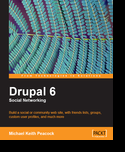
Metabolic processes during the month of fasting allows the emergence of bad
breath problems. Although the fair, there's nothing wrong if you try just went on a variety of
natural ingredients to benefit.
Because bad breath is worth the reward of fasting, some people were not too ignore. Problem really
bad breath during fasting tended to increase rather than a weekday, so far no definitive answer.
The easiest way to reduce bad breath during fasting course diligently cleaning the teeth, especially after eating a meal. Worse, this habit is also not easy for some people. Finished meal, many people are lazy to brush my teeth, instead go straight to bed again. In fact, after 30 minutes was not eating, mouth acidity increases because the residual acid is not removed.
To counteract bad breath and make breathing more friendly during fasting, you can take advantage of some of these natural ingredients.
Cloves reduce inflammation
Journal of medicinal plants in Indonesia in 2005 is mentioned that contain clove essential oil (15-20 percent) and eugenol (60). Essential oils was developed by several manufacturers of national medicinal herbs as raw materials for wind or reject as peluruh gas in stomach or other digestive problems.
Clove oil can improve the function of the stomach so that digestive better. In addition, clove oil is believed to reduce inflammation, especially those that occur on mucous membranes of the mouth and throat as one trigger bad breath.
To get his usefulness as an antidote to bacterial mouthwash bad breath, here's how mixes:
Take 3-5 cloves of interest. Pour boiling water enough to more or less five minutes, then chill. Use this water to rinse.
Alternatively, take a few grains of dry clove. Mashed to pieces, soak in a glass of warm water. After 30 minutes, the water can be used to gargle.
Betel rich asiri
Betel leaves used as the main ingredient for menginang for being able to strengthen teeth, heal minor wounds in mouth, eliminate bad breath, and stop bleeding gums. Community tradition that tickled scientists to prove the clinical efficacy of betel leaf.
From research conducted at the Biochemistry Laboratory, Bogor Agricultural University (IPB) is revealed, in a betel leaf essential oils have antibacterial activity significantly.
How to mix: Rinse a few betel leaves and then boiled with 1.5 cups of water. After a cold, boiled water was used to rinse the mouth after brushing your teeth.
10-15 Take the red betel leaves were washed, boiled with 400 cc (two glasses of water) until the remaining 200 cc, then filtered. While warm, use water to rinse his mouth after a meal.
Cinnamon disguise bad breath
Cinnamon is a spice commonly in the form of bark used as a flavor enhancer or pie dish. In addition, this herb is also known to have various properties, including reducing the odor that comes out of his mouth when fasting.
Thanks to its benefit, the cinnamon was developed as a mixture of chewing gum, herbal medicine industry, and
beauty products. Chemical properties of cinnamon is warm, spicy, fragrant, and slightly sweet. Content of chemical substances such as essential oil, safrole, tannins, sinamadehide, eugenol.
Recent research in the United States shows, the use of cinnamon in the gum can overcome the problem of bad breath. Cinnamon apparently not only able to disguise bad smells, but also contain substances that may decrease the concentration of bacteria in the mouth.
To use as a mouthwash cinnamon bacteria that cause odor remover, pretty easy. Boil two sticks of cinnamon with enough water to the boil. After chilling, the water can be used as a gargle.
Cardamom antibacterial cool
Among fans herbs, cardamom is known as an expectorant as well as antibacterial. Some research suggests that the secret was apparently derived from the properties of essential oils contents sineol.
Sineol a similar but not equal to eukaliptol eucalyptus, this is more spicy. However, when used as a mouthwash, then the results are cool. In fact, this material is used for making a false peppermint.
There are two ways to get the properties of cardamom:
For external
treatment, boiled or mashed all parts of the cardamom plant. Then the water or soft dough smeared into the affected part.
For the mouthwash, crushed cardamom seeds and then boiled and drunk the water filter.
Alternatively, cardamom seeds boiled with water. After cooking, cool, boiled water can be used to gargle. Gargle after
brushing your teeth, after the meal of course.
In order to obtain the maximum usefulness, usually prior to use, cardamom alias stored in the form of whole unpeeled. Recently when they wanted to use, peel off outer skin and then take the seeds.










 Smoking marijuana proved effective to use a pipe to relieve pain in patients suffering from nerve damage. Research on
Smoking marijuana proved effective to use a pipe to relieve pain in patients suffering from nerve damage. Research on  Healthy gums are pink and hard. If the gums look soft, inflamed, easy bleeding and deep red color, it is likely there has been inflammation (
Healthy gums are pink and hard. If the gums look soft, inflamed, easy bleeding and deep red color, it is likely there has been inflammation ( Metabolic processes during the month of fasting allows the emergence of bad
Metabolic processes during the month of fasting allows the emergence of bad 

